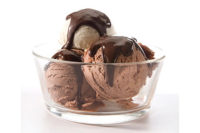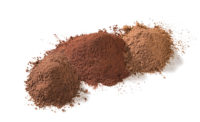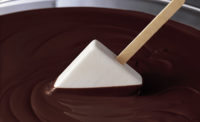Dairy Foods: Dark chocolate is all the rage in confectionery and baking. Does its stronger, less-sweet profile work in dairy, too? Why or why not?
Reed: The dark chocolate flavor profile plays well with dairy because lactose — the natural milk sugar in dairy — helps round out the strong, somewhat bitter flavors of dark chocolate. Quite a few dark chocolate-flavored dairy foods and beverages exist in today’s market, which certainly speaks to the effectiveness of their combination.
Rick Stunek: Dark chocolate does work in dairy, particularly with the current trend of sugar reduction. However, it takes the right balance of cocoa and other ingredients to make it work.
Wagner: The sweetness of the finished product may need adjustment to get to the astringency that is indicative of a dark chocolate. Depending on the profile needed for the consumer, there may be a need for additional cocoa to support the delivery of the desired profile.
Dairy Foods: What other flavors complement the chocolate-dairy combination?
Reed: Some common cocoa flavors, such as fruity, nutty brown, coffee and vanilla, work well in a chocolate-dairy combination. In addition, some less common flavors such as spicy, winey, brown fruit and even tobacco produce unique results. In the end, the final chocolate-dairy combinations are a product of both a developer’s creativity and, to a degree, what a consumer market dictates.
John Pimpo: From our experience, stronger fruit profiles — cherry, raspberry, etc. — match better with dark chocolates, as does mint. Traditionally, caramels have blended better with milk chocolates, but there has been a stronger trend towards dark with caramels and other sweet pairings. Of course the hottest trend right now is sweet-salty, specifically salty caramel. We currently offer a milk caramel sea salt truffle for ice cream that has been and continues to be very popular among ice cream manufacturers. Recently there have been some requests for a dark caramel sea salt truffle as well. Our milk panned pretzel nibs are also an answer to that trend.
Stunek: There is a pretty broad range of flavors that work well with chocolate. The same fruit flavors, like strawberry and raspberry, that you see in confectionary products go together with dairy. Almond works really well. But my two favorites are mocha and chocolate-peanut butter. Reese’s Cups are my favorite candy bar, so I love that flavor combination. Some people worry about the allergen issue there, but it is possible to do a really good non-allergenic chocolate-peanut butter. And I love the chocolate-coffee mix, as well.
Dairy Foods: Speaking of mocha, blended coffee-dairy drinks are booming in retail and foodservice. What should we keep in mind when formulating with dairy, chocolate and coffee?
Stunek: Like anything else, everyone has a different view of what “mocha” should taste like. So it really comes down to preference and what the developers and marketing staff think works best for their market.
Pimpo:Coffee can be a very polarizing flavor profile. Typically the consumer who is choosing a coffee-oriented flavor really likes coffee — so your base should reflect that. However, the newest trends for coffee desserts have them paired with caramels, milk or dark chocolates, whipped cream or marshmallow variegates, etc. Developers can pair the sweet with the bold versus the bold with the sweet.
Widlak: Cocoa flavors and colors may behave or be perceived quite differently in a dairy or coffee environment, and the desirable properties perceived in the chocolate ingredient by itself may change in the finished product. Interactions between different flavor components and ingredients within a finished product formula can have both positive and negative impact on flavors and colors — keeps life interesting.
Dana Sanza, flavorist, FONA International Inc.: A lot of times this is a trial-and-error process. In coffee applications, sometimes the darker, more bitter chocolates accentuate the bitter notes of coffee in an unfavorable way. The best thing to do is have a base and test different cocoa powders, chocolate flavors, et cetera, and taste which profile best compliments the coffee ingredients. The same cocoa or chocolate is not necessarily going to work across all coffee-drink SKUs.





